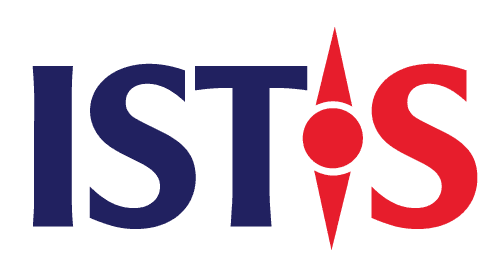Khi các hệ sinh thái đổi mới sáng tạo ngày càng trở nên phức tạp, năng động và có sự kết nối chặt chẽ, một công cụ đã nổi lên như một yếu tố không thể thiếu đối với các nhà hoạch định chính sách, doanh nhân, nhà đầu tư và các tổ chức hỗ trợ: công cụ lập bản đồ hệ sinh thái. Không chỉ đơn thuần là một danh mục hay cơ sở dữ liệu, đây là một công cụ trực quan và phân tích mạnh mẽ, giúp các nhà lãnh đạo trên toàn thế giới hiểu rõ những mạng lưới quan hệ phức tạp thúc đẩy đổi mới sáng tạo.
Nhìn Toàn Cảnh
Đổi mới sáng tạo không diễn ra trong sự cô lập. Các startup, tập đoàn, trường đại học, vườn ươm, cơ quan nhà nước và các quỹ đầu tư đều đóng vai trò quan trọng trong việc thúc đẩy tiến bộ — nhưng nếu thiếu cái nhìn về cách các chủ thể này tương tác, các nỗ lực có thể bị phân mảnh hoặc trùng lặp. Công cụ lập bản đồ hệ sinh thái mang lại sự rõ ràng, thể hiện các mối liên kết, khoảng trống và cơ hội tồn tại trong một khu vực hoặc lĩnh vực.
Bằng cách trực quan hóa toàn bộ bức tranh, các bên liên quan có thể phối hợp hiệu quả hơn. Ví dụ, chính phủ có thể xác định các lĩnh vực chưa được hỗ trợ đủ, nhà đầu tư có thể khám phá những cụm ngành mới nổi, và các vườn ươm tăng tốc có thể kết nối nhà sáng lập với nguồn lực phù hợp. Kết quả là một cách tiếp cận phát triển hệ sinh thái có tính phối hợp, chiến lược và bao trùm hơn.
Thúc Đẩy Quyết Định Thông Minh Hơn
Ngoài khả năng trực quan hóa, các công cụ lập bản đồ hệ sinh thái hiện đại cung cấp thông tin dữ liệu phong phú để hỗ trợ ra quyết định dựa trên bằng chứng. Với các tính năng như lọc theo ngành, vị trí, giai đoạn phát triển hoặc trọng tâm tác động, người dùng có thể xác định các xu hướng và mô hình mà bình thường có thể bị bỏ sót.
Tại Đông Nam Á, chẳng hạn, một số cơ quan đổi mới sáng tạo quốc gia đã áp dụng các công cụ lập bản đồ để giám sát hoạt động của startup, theo dõi mạng lưới nhà đầu tư và phân bổ nguồn vốn công vào những lĩnh vực có tiềm năng tăng trưởng cao. Các công cụ này cũng ngày càng được tích hợp vào các cổng thông tin đổi mới sáng tạo quốc gia, giúp nhiều đối tượng tiếp cận hơn — từ sinh viên, doanh nhân cho đến đối tác quốc tế và nhà hoạch định chính sách.
Tăng Tốc Hợp Tác Và Đầu Tư
Một trong những chức năng mạnh mẽ nhất của công cụ lập bản đồ hệ sinh thái là khả năng thúc đẩy kết nối. Khi người dùng dễ dàng nhìn thấy ai đang làm gì, ở đâu và hợp tác với ai, việc hợp tác diễn ra nhanh hơn và tự nhiên hơn. Nhà đầu tư có thể tìm kiếm các startup tiềm năng phù hợp với mục tiêu của họ; trường đại học có thể hợp tác với doanh nghiệp trong thương mại hóa nghiên cứu; và các nhà đổi mới sáng tạo địa phương có thể tiếp cận mạng lưới khu vực hoặc toàn cầu dễ dàng hơn.
Khả năng kết nối này đặc biệt quan trọng trong bối cảnh đổi mới sáng tạo ngày nay, khi các giải pháp cần được mở rộng vượt qua biên giới và lĩnh vực. Một bản đồ được thiết kế tốt không chỉ thể hiện bức tranh hiện tại — mà còn xây dựng các cầu nối đưa ý tưởng tiến xa hơn.
Trao Quyền Cho Đổi Mới Sáng Tạo Bao Trùm
Có lẽ quan trọng nhất, các công cụ lập bản đồ hệ sinh thái giúp dân chủ hóa quyền tiếp cận thông tin. Chúng tạo sân chơi bình đẳng hơn khi giúp những chủ thể ít được chú ý — như startup do phụ nữ lãnh đạo, vườn ươm ở nông thôn hoặc nhà đầu tư mới — được phát hiện và hỗ trợ. Nhờ đó, chúng góp phần bảo đảm hệ sinh thái đổi mới sáng tạo không chỉ hoạt động hiệu quả mà còn công bằng và đại diện cho nhiều thành phần.
Khi các quốc gia và khu vực cạnh tranh để trở thành trung tâm đổi mới sáng tạo trong tương lai, giá trị của công cụ lập bản đồ hệ sinh thái trở nên rõ ràng hơn bao giờ hết. Đây không còn là một lựa chọn “nên có” — mà là một nhu cầu chiến lược cho những ai muốn điều hướng sự phức tạp, thúc đẩy hợp tác và mở khóa tăng trưởng bao trùm.








